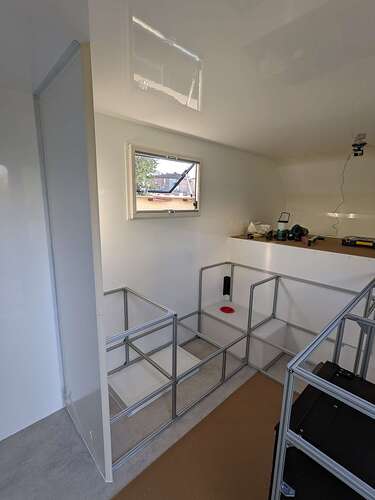I will be sharing some details about running homeassistant in a mobile context. Typically homes do not move, however as the WEF reorganizes world economies into a subscription based economy, ive decided to blaze a trail into automating a mobile home. Particularly an overlanding truck that could be lived in as an option.
Most of this is a work in progress and some critical features are yet to be
Some goals:
- 100% reliable internet connectivity
- Automatic power conservation
- Balance constrained living space with simple work flows for living
- I need to be able to shit, shower, and sleep in any condition to maintain a respectable job even as a hypothetically homeless vagrant
- I must be able to clean dishes and take a shower with the same basic functionality as a stationary home
- I should be able to be completely disconnected from any sort of utility for extended periods, only needing to refuel
- the whole system should monitor itself while im away and want 2 way communication even if there is no cellular reception
Fun addons:
360degree security camera connected to a computer vision system
TTS is announced over a megaphone describing people by the color/type of clothes they wear and warning to leave if they are within 5ft for longer than 45 seconds. Adding colorful escalating commentary if they remain longer than 90 seconds
Big challanges:
I may be one of the first people to try this. Im sure million dollar mobile mansions have an entire canbus network that does this, but i want to use off the shelf and diy components. This also means that the big names in off roading 12v power do not have an mqtt interface i can subscribe/publish. They are canbus, or at best bluetooth app. If i want full automation, i will need to learn how to reverse engineer the canbus signalling or MITM the bluetooth app.
Current status:
Right now i have the basic platform locked in. There were some key considerations i made to allow homeassistant to perform in a mobile scenario
The connectivity and computer platform is rock solid, even in 10F and below weather. The plywood shelves are temporarily/permanent until i can design an aluminum system, but theyre functional. The secret sauce to the reliable internet is an openwrt router VM running on the mini PC. I tunnel over starlink and an AT&T modem, so that with proper QoS i take advantage of 12Ghz starlink when theres a clear view of the sky and flip to cellular to safe power or when theres 300ms or more of starlink latency (such as driving under a bridge). A BGP network on a VPS decides if cellular or starlink should be used, and even WiFi if theres a free network in range.
An LXC container running docker runs several tools, including a dormant frigate. I did have HassOS as a normal VM, and everything i describe will work in HassOS, but granting arbitrary hardware to docker such as GPU without passing thru PCI devices eventually convinced me to use plain ol homeassistant docker and traefik.
In order to start using home assistant mobile, the first thing that needs to be addressed is the home zone. This was relatively easy because i just poll the starlink device tracker for extremely accurate gps and then redirect the lat/long into the homeassistant.set_location service. Voila, now its “mobilehome” assistant, and any device tracker that has gps and is fixed to the car can be used
More to come…
Ill keep this project scoped to the home automation side of this as i expand if theres any interest in my effort.




